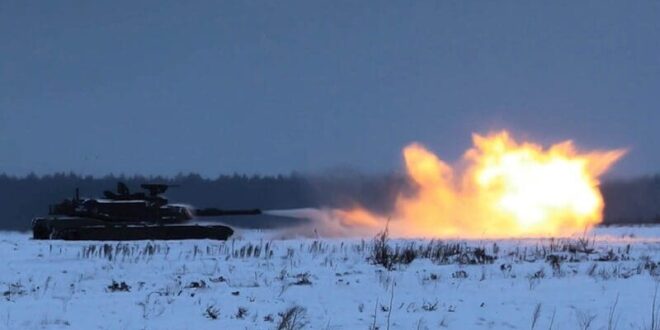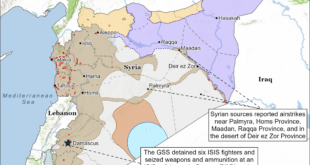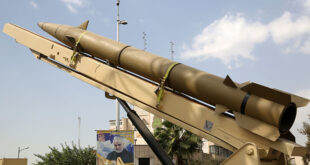It is well known that the three Baltic States, Latvia, Lithuania, and Estonia, are distinct yet share many similarities. They are comparable in size and have similar social, political, and economic development. They are situated in similar geostrategic positions within the same military operational theatre. For this reason, questions have often been raised about whether military cooperation among Estonia, Latvia, and Lithuania has been sufficient. The Center for Geopolitical Studies Riga aimed to answer this question in its study, Three Decades of Baltic Military Cooperation and the Way Ahead, by Māris Andžāns and Jānis Kažociņš.
From the Past to the Present Baltic Trilateral Cooperation
Baltic trilateral military cooperation is noteworthy both within NATO and on a global scale. Unlike many advanced bilateral partnerships and multilateral alliances, this case is unique. Since the early 1990s, Estonia, Latvia, and Lithuania have actively pursued deep trilateral military integration. Their cooperative initiatives include the Baltic Battalion (BALTBAT), the Baltic Naval Squadron (BALTRON), the Baltic Air Surveillance Network (BALTNET), and the Baltic Defence College (BALTDEFCOL).
BALTBAT, arguably the most well-known of all these projects, was launched in 1995. Throughout its eight years, BALTBAT, as a complete battalion, was not deployed for any operations. However, approximately 1,200 BALTBAT soldiers were sent to Bosnia and Herzegovina and Lebanon (the peacekeeping focus of the project was selected to avoid irritating Russia). In 2003, before the Baltic States joined NATO, BALTBAT was disbanded. It is widely believed that BALTBAT played a crucial role in Westernizing and enhancing Baltic land forces and improving their readiness for NATO membership.
BALTBAT motivated and laid the groundwork for additional Baltic trilateral initiatives. The next such project, BALTRON, was launched in 1998. Though it functions to this day, Estonia withdrew from the project’s “flagship” squadron element a decade ago—BALTRON also encompasses the Navy Training Base, which consists of various smaller units in Latvia and Lithuania. Similarly to BALTBAT, BALTRON was crucial in Westernizing and improving the Baltic navies. During the first twenty-five years, the squadron included over twenty-five vessels and participated in more than 100 exercises.
BALTNET, founded in 1998, began operations in 2000 to help the Baltic States monitor their airspace. The accomplishments of the early BALTNET years were vital in establishing an effective, NATO-compatible Baltic air monitoring capability. BALTNET joined the Integrated Air and Missile Defence with the Baltic States in NATO. The Baltic control and reporting center was initially established in Karmėlava, Lithuania, and was supported by national nodes. In 2007, it became a combined control and reporting center with annual commander rotations from each Baltic State. As of 2020, the single center was replaced by three interoperable national control and reporting centers in Karmėlava (Lithuania), Tallinn (Estonia), and Lielvārde (Latvia).
Lastly, BALTDEFCOL was established in 1999 in Tartu, Estonia. It is the only significant Baltic project to endure as a permanent trilateral endeavor. It offers courses for military and civilian personnel from the Baltic States and their allies. BALTDEFCOL also organizes the Annual Baltic Military History Conference and the Annual Conference on Russia, and it publishes peer-reviewed academic papers in the Journal on Baltic Security. Approximately 2,000 individuals have graduated from various courses at the college. During the study process, officers and civilians forge lasting friendships, mutual understanding, and respect—achievements that would otherwise be challenging to attain on such a broad scale and at these levels.
In addition to these trilateral projects and smaller initiatives, defense ministers, military commanders, and other officials from the Baltic States convene annually or more often to align their policies. As a result, the Baltic States have been united on almost all significant strategic defense matters over the past thirty years.
Despite these achievements, certain expectations remain unmet. Each country has developed its own military culture, acquired different military equipment, and created additional regional military integration formats, such as Estonia’s partnership with Finland and Lithuania’s with Poland. Among the BALT projects, only BALTDEFCOL has continued and remained fully trilateral.
Although the Baltic States’ military cooperation prior to joining NATO in 2004 exhibited idealistic enthusiasm, it was fundamentally pragmatic and acted as a catalyst for achieving NATO membership. Without the joint BALT projects during the decade leading up to NATO accession in 2004, the Baltic journey towards the Alliance would have been more intricate, and the Baltic armed forces would have been less equipped.
Following NATO membership, the Baltic trilateral military cooperation has weakened. The Baltic States have chosen to diverge paths for developing their defense capabilities, although they have firmly grounded their defense systems in NATO’s collective defense. Over the past twenty years, no notable new joint project has been launched to match the ambitions of BALTBAT, BALTRON, BALTNET, or BALTDEFCOL.
From Present to the Future Baltic Trilateral Cooperation
While the Baltic collaborative spirit and idealism invite similar aspirations as in the 1990s (some authors have proposed various additional joint initiatives, ostensibly also common Baltic armed forces), realities have changed, and so should the perspective on Baltic trilateral military cooperation. The Baltic States are no longer non-aligned, newly independent countries with immature armed forces: They are now fully fledged members of NATO. Though during their first decade of membership, the Baltic States were practically only members on paper—the only notable Allied presence was the Baltic Air Policing mission—things changed substantially with Russia’s aggression toward Ukraine in 2014. The Baltic Air Policing mission was doubled, the United States started rotating small military units, and NATO established the enhanced Forward Presence battlegroups in each Baltic State.
Baltic cooperation before NATO accession thrived only with the support of Western partners, especially the Nordic countries. These partners are now NATO Allies, and their relationships with the Baltic States have also evolved. Most notably, Denmark and Sweden rotate their armed forces through Latvia. Therefore, the Baltic defense should primarily be addressed within the NATO context, particularly with the enhanced Forward Presence framework nations (Canada, Germany, the United Kingdom) and the United States. First and foremost, it is essential to embed stronger Allied armed forces in the Baltic States as much as possible rather than dedicating resources to integrating the Baltics’ limited capabilities. Past precedents show that even the best ideas face inter-Baltic competition, differing perspectives and priorities, and concerns over sovereignty.
This does not imply that there is no role for further Baltic trilateral military cooperation. The Baltic States function as a single operational theatre. They will either thrive or fail collectively and must collaborate politically and strategically. The mechanisms are in place and should be utilized to gain a clear benefit. Promising areas in military cooperation at present are:
Joint procurements or at least further synchronization of some elements, such as air and missile defense systems and artillery munitions
Better Baltic command and control (C2) coordination within the NATO context, particularly regarding reinforcement plans
Coordination and development of future defense systems such as unmanned aerial, sea, and land vehicles and expanded drone (swarm) technology.Some areas may not fall within military cooperation but have a major impact on defense. They aim to improve resilience and mutual support. These include:
A common approach and mutual support against hybrid attacks
Improved Baltic shared situational awareness
The simplification of military mobility, especially before hostilities
The protection and military defense of undersea and land-based energy infrastructure
The safeguarding and redundancy of communication links within, to, and from the Baltic States.While Russia may not be able and willing to pose a direct military threat to the Baltic States in the short term, such a threat must be acknowledged and planned for. Much valuable work has already been done, and more is in progress. Therefore, the military maxim according to which the Baltic States should work is to hope for the best but prepare for the worst. Si vis pacem, para bellum!
 Eurasia Press & News
Eurasia Press & News




